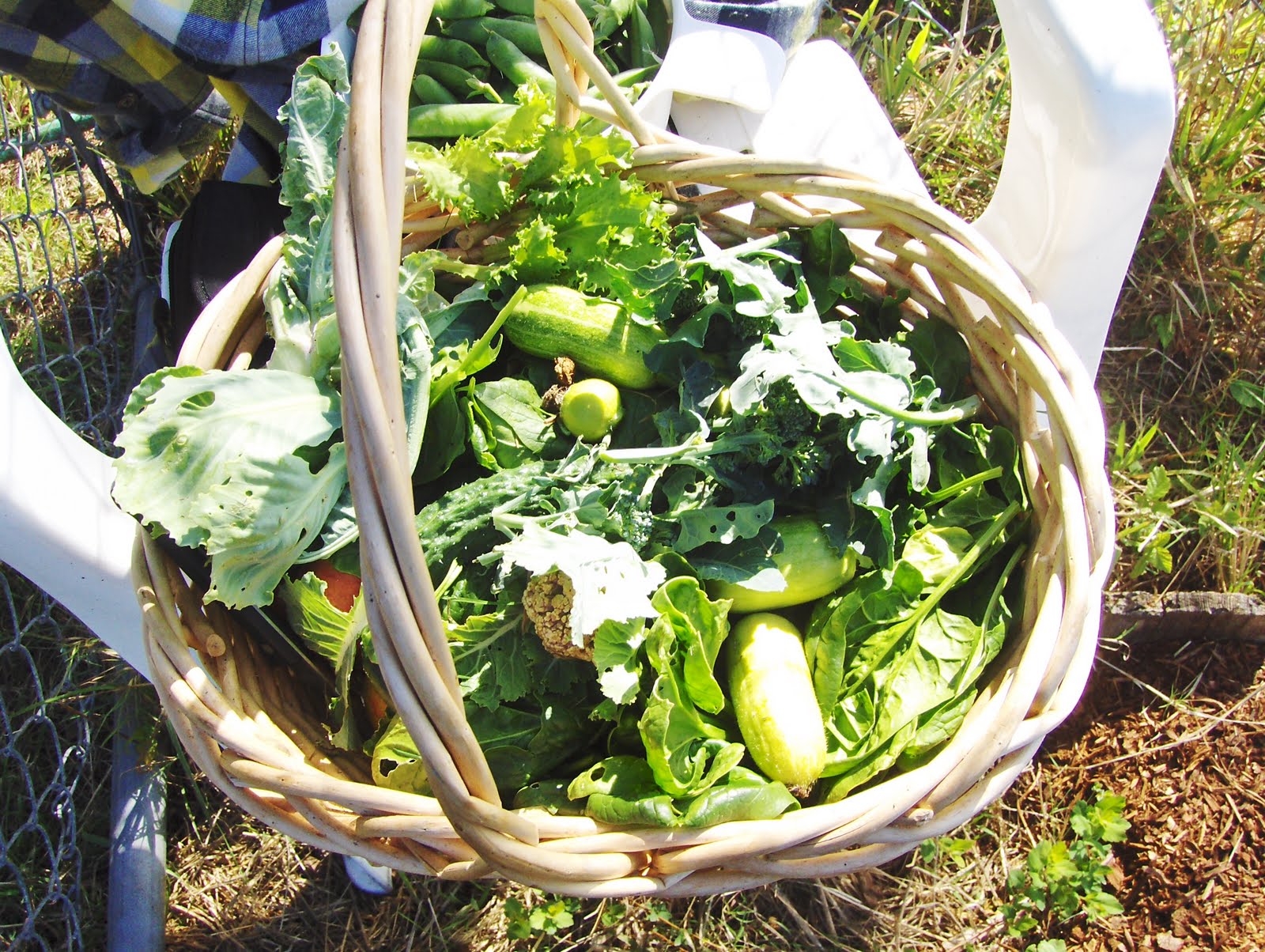If you think cooking is complicated, it's all because you use recipes to prepare anything.
Here, we learn a couple of techniques, and learn to respect your ingredients.
Respect, as in "do as little as possible to change your ingredients".
If you start with greens, you are starting with the second food your ancestors tasted. Greens, most greens you pick up at the supermarket have been cultivated to be sweet and tender. So, for you, broccoli and cauliflower, even garlic and onions on your plate are the "designer" variety. They have been modified (yes, genetically so) to travel distances without wilting, to grow fast and to produce a very mild flavor.
So, most vegetables are bland.
They need assistance to pop in your mouth.
There is reason we roast or saute' vegetables instead of eating them fresh.
Fire adds a certain softness to the crunch; it adds a caramel tint too.
To saute' vegetables, you need a bit of fat, a bit of liquid, some accompanying flavors and washed, trimmed vegetables. ( As you trim your vegetables, save those tough stocks, btw, for our soup recipe.)
Fats: oil, butter, bacon bits.
Liquid: water, juices, stock. (We are definitely going to make stocks)
Flavors: onions, garlic, herbs like thyme. You can also use ginger, chili, seeds like fennel, coriander.
Start the fire at medium with a tablespoon or two of fat.
Get these things ready, one chopped small onion,two cloves of mashed garlic and one other item of your choice to get the taste of that item to be identifiable. Later, you can add two items, say ginger and chili, and see how you like that taste.
Start cooking with the onions until they begin to look transparent, then add garlic and the vegetables. Keep stirring, coating the vegetables until they begin to absorb the oil. Add the extra item, say chili. Stir quickly, then cover and turn off the heat.
If vegetables still too raw for your taste, add a Tablespoon of liquid and return to the fire until your vegetables appear cooked enough.
Turn off the heat and taste. Now is the time to add salt and pepper to taste. A few grains at a time.
Try to pull your vegetables out before they are total mush. They should taste a lot like fresh vegetables, so keep experimenting with the time and the amount of liquid.
There, a wonderful bunch of vegetables with a different taste than those you made in the microwave! Each time you add a new flavoring, say, toasted fennel seeds at the beginning when you are sweating your onions, you will add new layers of flavors.
Add them to sandwiches, or over pasta with grated cheese and you have a meal.
Here, we learn a couple of techniques, and learn to respect your ingredients.
Respect, as in "do as little as possible to change your ingredients".
If you start with greens, you are starting with the second food your ancestors tasted. Greens, most greens you pick up at the supermarket have been cultivated to be sweet and tender. So, for you, broccoli and cauliflower, even garlic and onions on your plate are the "designer" variety. They have been modified (yes, genetically so) to travel distances without wilting, to grow fast and to produce a very mild flavor.
So, most vegetables are bland.
They need assistance to pop in your mouth.
There is reason we roast or saute' vegetables instead of eating them fresh.
Fire adds a certain softness to the crunch; it adds a caramel tint too.
To saute' vegetables, you need a bit of fat, a bit of liquid, some accompanying flavors and washed, trimmed vegetables. ( As you trim your vegetables, save those tough stocks, btw, for our soup recipe.)
Fats: oil, butter, bacon bits.
Liquid: water, juices, stock. (We are definitely going to make stocks)
Flavors: onions, garlic, herbs like thyme. You can also use ginger, chili, seeds like fennel, coriander.
Start the fire at medium with a tablespoon or two of fat.
Get these things ready, one chopped small onion,two cloves of mashed garlic and one other item of your choice to get the taste of that item to be identifiable. Later, you can add two items, say ginger and chili, and see how you like that taste.
Start cooking with the onions until they begin to look transparent, then add garlic and the vegetables. Keep stirring, coating the vegetables until they begin to absorb the oil. Add the extra item, say chili. Stir quickly, then cover and turn off the heat.
If vegetables still too raw for your taste, add a Tablespoon of liquid and return to the fire until your vegetables appear cooked enough.
Turn off the heat and taste. Now is the time to add salt and pepper to taste. A few grains at a time.
Try to pull your vegetables out before they are total mush. They should taste a lot like fresh vegetables, so keep experimenting with the time and the amount of liquid.
There, a wonderful bunch of vegetables with a different taste than those you made in the microwave! Each time you add a new flavoring, say, toasted fennel seeds at the beginning when you are sweating your onions, you will add new layers of flavors.
Add them to sandwiches, or over pasta with grated cheese and you have a meal.


Interesting and practical advice for good eating and cooking!
ReplyDeleteThanks.
ReplyDelete